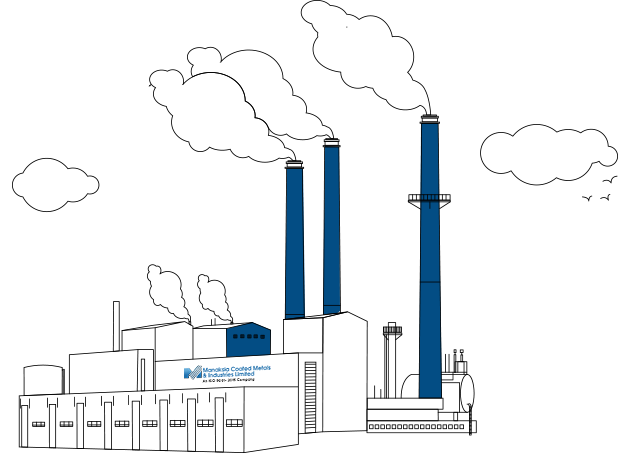


Manaksia Coated Metals and Industries Limited is a leading manufacturer and exporter of Galvanised and Pre-Painted steel coils and sheets.



In addition to our regular product lines, MCMIL also has a series of high-quality in-house brands and offers private-label services.

Stay updated with our latest investor news, presentations, policies and financial performance reports right here.


Unlock opportunities to take your career to the next level at MCMIL, with the latest facilities, the best benefits, and plenty more.

In the age of high-speed industry, performance, appearance, and longevity must all go together especially in the case of building materials. That is exactly where Pre-Painted Galvanised (PPGI) Steel delivers. Its glossy appearance and vibrant hues hide a highly engineered multi-layered product that resists extreme weather, resists corrosion, and provides diverse industry applications from roofing to refrigeration.
Let us get a closer understanding of how PPGI is manufactured, how it works, and why it is the preferred choice for so many structural and aesthetic uses.
Pre-Painted Galvanised Iron (PPGI) steel is galvanised steel (zinc-coated) painted in a controlled, continuous process before forming. PPGI is of uniform quality and has better adhesion between layers compared to post-painted or hand-coated metal.
It is employed very extensively in:
The PPGI’s beauty lies not only in appearance but also in its multi-layered defence system:
Corrosion Resistant: PPGI excels in humid, marine, and industrial conditions as a result of the combination of zinc and organic paint.
UV & Colour Stability: High-quality paints like PVDF retain gloss and colour for over 15 years with minimal loss of gloss.
Mechanical Strength: The steel, even after several coatings, maintains tensile strength and formability.
Surface Aesthetics: With matte, gloss, wood grain, and metallic finishes, it provides functionality as well as design value.
Conclusion: The Smart Steel for Modern Applications PPGI steel is not just about appearance ,it’s about performance, longevity, and keeping maintenance costs low.
As an industrial purchaser, contractor or fabricator, selecting a technologically advanced, factory-applied steel such as Manaksia’s PPGI is an investment that will yield dividends. Inside and out, it’s designed to perform and make an impression.
What is Pre-painted steel? Pre-painted steel is the steel that has received a protective paint coating or finish prior to...
Galvanised steel sheets and coils form the backbone of many modern industries, from construction to appliances and infrastructure. At Manaksia...
Current studies show that the market for global pre-painted galvanised steel was $40 billion USD in 2023 and is estimated...
In the age of high-speed industry, performance, appearance, and longevity must all go together especially in the case of building...
When it comes to pre-painted steel, aesthetics are just as crucial as performance. Choosing the right RAL colour, surface finish,...